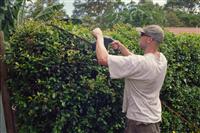
How to become a qualified gardener - groundsman!
Ideal course for those interested in:
- Work in public parks
- Work in public parks with turf facilities
- Work in private garden
- Work in estate gardens
This 700 hour course that provides initial training for gardeners, groundsmen and others involved in the care and maintenance of parks, private and public gardens and turf facilities. This course is similar to other VHT002 horticulture certificates in its introductory (core) units, but devotes 50% of the course to topics specifically related to grounds maintenance. Accredited through International Accreditation & Recognition Council'.
If you are looking for a 'real'
Certificate in Horticulture that will give you more than the basics (so
often the extent of most courses on offer now), then this course is for
you. Employers want graduates with a sound grounding in
horticulture - this course offers that in the core units, and
specialises in grounds management in the stream units.